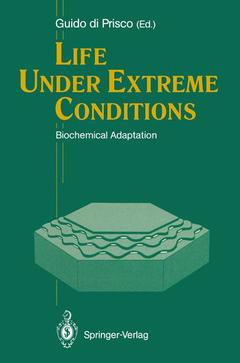Description
Life Under Extreme Conditions, Softcover reprint of the original 1st ed. 1991
Biochemical Adaptation
Coordinator: di Prisco Guido
Language: French
Subjects for Life Under Extreme Conditions:
Keywords
Lipid; adaptation; antarctica; bacteria; biomolecule; environment; enzyme; enzymes; membrane; nucleic acid; protein; protein folding; proteins; stability; temperature
Publication date: 12-2011
144 p. · 15.5x23.5 cm · Paperback
144 p. · 15.5x23.5 cm · Paperback
Description
/li>Contents
/li>
In their very first lecture biochemists learn that biomolecules, namely nucleic acids, proteins and lipids, are extremely temperature sensitive and will denature and lose their function easily. Then how do Archaebacteria survive in hot springs or Antarctic fishes which live in ice-cold water? The way nature engineered subcellular structures, lipid membranes or proteins to meet the biochemical requirements of extreme conditions - like extreme temperature or salt concentrations - is described in Life Under Extreme Conditions.
The Role of Antifreeze Glycopeptides and Peptides in the Freezing Avoidance of Cold-Water Fish.- An Overview of the Molecular Structure and Functional Properties of the Hemoglobins of a Cold-Adapted Antarctic Teleost.- Cold-Stable Microtubules from Antarctic Fish.- Life in Arctic Environments: Molecular Adaptation of Oxygen-Carrying Proteins.- Archaebacteria: Lipids, Membrane Structures, and Adaptation to Environmental Stresses.- How Nature Engineers Protein (Thermo)Stability.- Enzymes from Extreme Thermophilic Bacteria as Special Catalysts: Studies on a ?-Galactosidase from Sulfolobus solfataricus.- A Model for the Stabilization of a Halophilic Protein.
© 2024 LAVOISIER S.A.S.




